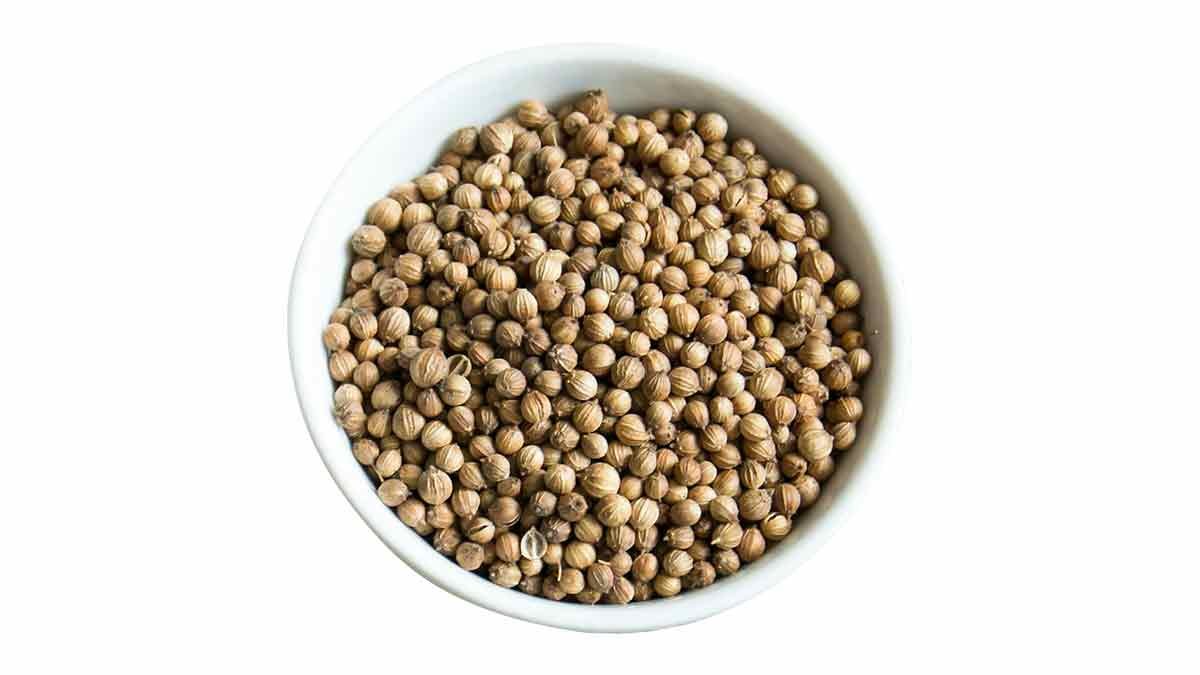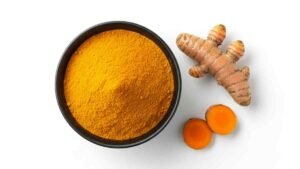Coriander Scientific name Coriandrum sativum also known as Cilantro; sometimes mistakenly called Indian, Chinese, or Japanese parsley is an annual herb in the family Apiaceae. Grown in fields as an annual crop; the fruits form on the plant about three months after sowing. the seed or fruits are used in cooking after dried. Coriander name in Urdu is Sokha Dhanya or Khuskh Dhanya. Coriander’s Major flavor compound is Linalool and its key flavor profile is Floral Warming and Citrus. Coriander has two main cultivated varieties: vulgare (Indian) and microcarpum (European). Native to the Mediterranean and southern Europe, coriander is now widely cultivated throughout the world for both its seeds and leaves. The main centers of production are in India and Russia, with major exports to Morocco, Romania, Iran, China, Turkey, and Egypt.
Physical Explanation
The plant produces a slender, hollow stem 30–60 mm (1–2.5 in) tall with fragrant bipinnate leaves. The small flowers are pink or whitish and borne in clusters. The fruit is a small, dry schizocarp with two semi globular carpels that join at the commissural or inner sides, forming a single, smooth, nearly spherical fruit about 5 mm (0.2 in) diameter. The light yellow-brown fruits have a mild aroma and taste similar to a combination of lemon peel and sage. The seeds contain 0.1–1% essential oil. Its main ingredient is coriander.
Coriander History
The discovery of an 8,000-year-old cache of the spice in Israel’s Nihal Hamar cave, along with evidence from Egyptian tombs, suggests that coriander originated as a cash crop in the Middle East. The Greeks and Romans used it as a medicine and meat preserve, as well as a spice in dishes such as lentils with chestnuts.
The spice came to India via Persia about 2,000 years ago, and four centuries later evidence points to its widespread use from China to Anglo-Saxon Britain. Early European settlers took the spice to North America, where it became naturalized and widely cultivated. By the 18th century, the spice had fallen out of favor in Europe, and its use was mostly limited to gin distilling and beer making. It is still a popular flavor in Belgian beer.
How To Toast Coriander
Coriander’s most flavorful oils are deep inside the seeds, and its taste profile changes greatly when the spice is toasted. if you leave it untoasted green, floral flavors will remain. toast coriander at 266ºF (130ºC) 356ºF (180ºC) temperature to a deep brown color to develop nutty and earthy pyrazines. Now grind the coriander seeds to release the oils, especially for quick-cooking dishes.
Coriander Culinary Uses
Coriander is used as a whole and ground farm in many dishes. The ground farm can act as a thickener. The root, stem, leaves, and fruits have a pleasant aroma and are widely used in flavoring. The whole young plant is used in the preparation of sauces and chutneys. Coriander is used in Whole and Ground form in many dishes like Curries, tagines, stews, stocks, marinades, sausages, chutneys, spice pastes, breads, compotes, stewed fruit, Samosa and Pakoras.
Coriander Non-Culinary Uses
Coriander is also used in traditional remedies for stomach problems. Essential oil is used in perfumes and cosmetics also.
Substitutions of Coriander
- Cardamom
- Caraway
- Cumin
Pairings or Food Partners of Coriander
Coriander is a versatile spice with a bitter taste reminiscent of dried orange peel. Although it can be used on its own, the spice is more often combined with ground cumin to form the backbone of flavor combinations around the world.
Fruits and Vegetables:
Pair coriander with apples, carrots, celery, mushrooms, onions, oranges, pears, plums, potatoes, pumpkin, shallots
Proteins
almonds, beans, beef, chicken, duck, fish, game, ham, lamb, lentils, sausage
Seasonings
allspice, anise, bay leaf, caraway, cardamom, chili peppers, cilantro, cinnamon, cloves, cumin, fennel seeds, fenugreek seeds, garlic, ginger, lemon juice, and zest, lime juice, mustard, paprika, parsley, pepper, nutmeg, sesame, thyme, turmeric
Coriander in fish dishes
Like other spices and ingredients, coriander is the most essential spice in fish recipes like baked fish, fish fired, and fish curries. I always use it in my fish recipes. Make a fish-fried fillet or baked crispy using coriander after crunching it. Always crush whole coriander and then use it in the recipe for fresh amora. Powder farm can loos amora and fressness after some days.
Blending
Lilac-scented linalool dominates coriander’s flavor profile, followed by a variety of mild-flavored terpenes, including pinene, cymene, and limonene, making it a versatile spice to combine.
Linalool floral, orange, sweet. Pair coriander with spices that have floral flavors like Cardamim+Nutmeg+Mace.
Pinene woody, pine, camphor. for woody notes with more pinene Black Pepper+Anices+Allspice
Cymene fresh, woody, Citrus. shared cymene underpins this classic combination: cumin’s slightly bitter earthiness is a great foil for the floral citrus nature of coriander
Lomonene citrus, herby, turpentine. add complexity to coriander’s citrus flavor with other fruity nuances: Ginger+Lemongrass+Caraway







